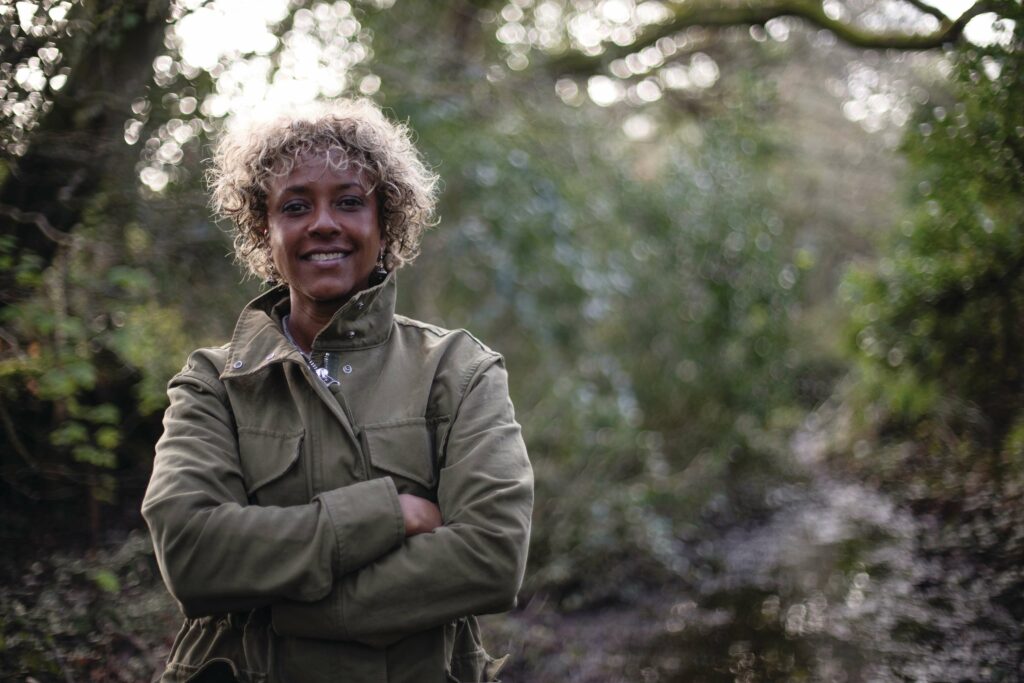OPINION
Gillian Burke
“The nature reserve prepares to welcome the farm into the fold”

KOPJE – WHAT A STRANGE BUT well-travelled little word. Pronounced ‘kop-ee’ and meaning ‘little head’ the word is derived from Dutch and arrived in southern Africa along with the first colonists. Like islands in a savannah sea, kopjes are rounded free-standing granite boulders and rocky outcrops, often balanced on ridges or hill summits. I recall looking out over such a landscape, burnt red at sunset, and feeling like a mere brushstroke in a masterpiece.
In Britain these same structures are known as ‘tors’ and standing at the top of Helman Tor in Cornwall, I get that same deep sense of being part of something bigger than me. Only this time, it is more than a feeling. The site lies at the heart of the largest and most ambitious nature recovery project in Cornwall.
Helman Tor is the highest point in the Cornwall Wildlife Trust nature reserve of the same name. On a clear day you can see right across the peninsula from the Atlantic Ocean to the north, and the English Channel to the south. From such a magnificent vantage point, it strikes me that, for at least the past 6,000 years since the first people started farming here, the rocks have been a reassuring constant in a continually changing landscape.
Farming shapes the landscape today, as it has done since Neolithic times, but surrounding low-lying land also bears the scars of a determined, centuries-old search for tin. Best observed from a distance, parts of the reserve are riddled with ankle-breaking hummocks and hollows left behind by relentless digging and scraping.
Today the network is a refuge of channels and pools that form a beautiful patchwork of wetland, woodland and grassland habitat that is enjoyed by an impressive species list – from willow tit, yellowhammers and grasshopper warblers to dormice. Reptiles are also well-represented – slow worms, common lizards and adders can be found basking in the shorter grass while the very rare marsh fritillary butterfly is reliably seen on the wing here from late spring into summer.
I was most struck, however, by the hazel glove fungus that was pointed out to me. A rare find in Britain there it was, an obligate parasite living off another species of fungus, the glue crust fungus. An Atlantic rainforest specialist, the hazel glove’s presence is an easily overlooked but important reminder of the temperate rainforest that would have once stood here.
For years, a missing piece in the jigsaw was Creney Farm, which was surrounded on three sides by the nature reserve and was recently acquired by the Trust adding an extra 97 acres to the 637-acre reserve. Looking out from the tor, I can pick out the old farm buildings. I know nothing of the lives that were lived there, in which children were raised and from which elderly departed. As the nature reserve prepares to welcome the farm into the fold, I’m reminded that, for some, rewilding farmland feels like the thin edge of the wedge; the beginning of a slow creep towards less and less home-grown food, as more land is ear-marked for rewilding.
Like a well-prepared canvas ready for painting, for decades the reserve has been carefully managed for the benefit of these flagship species, but the plan now is to embrace rewilding principles, introduce keystone species and hand over the reins to nature.
The vision for Helman Tor is to embrace a farmed rewilding approach, where food production and improving biodiversity are seen as complimentary rather than competing goals. I might be in danger of believing in the impossible – my faith is restored by the boots-on-the-ground conservation biologists and individuals that have put in the time (three decades to be precise), connecting not just with the land but with the community. If it can work anywhere, it is here.

Gillian presents Springwatch from 29th May to 15th June on BBC Two

Gillian Burke is vice president of The Wildlife Trusts.
Find out more about Cornwall’s Helman Tor reserve at bit.ly/44lumT0.